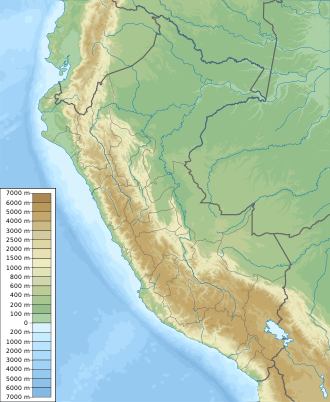| Calipuy National Sanctuary | |
|---|---|
| Santuario Nacional de Calipuy | |
 Puya raimondii in the National Sanctuary | |
| Location | Santiago de Chuco Province, La Libertad |
| Coordinates | 8°20′56″S78°17′42″W / 8.349°S 78.295°W [1] |
| Area | 4,500-hectare (11,000-acre) |
| Established | 1981 |
| Governing body | SERNANP |
Calipuy National Sanctuary is a Peruvian protected area created on January 8, 1981. The 4,500-hectare (11,000-acre) sanctuary, adjacent to the larger Calipuy National Reserve, is located in the Santiago de Chuco Province of the La Libertad region in northwestern Peru.
Contents
The Calipuy National Sanctuary, located high in the Andes Mountains, encompasses a variety of habitats. Species protected by the sanctuary include the queen-of-the-Andes and the guanaco. [3]
